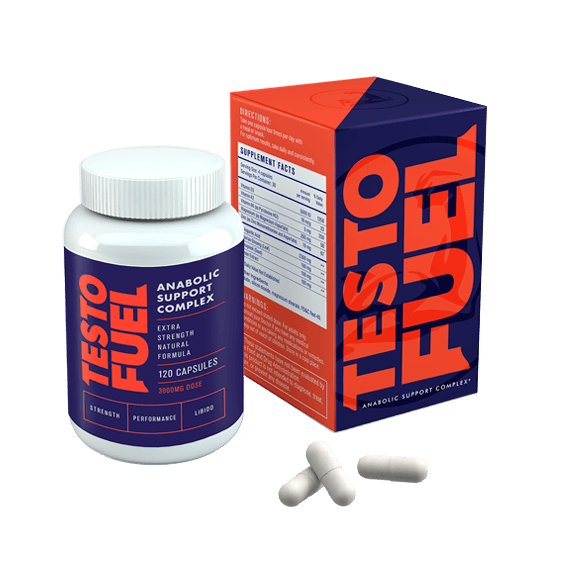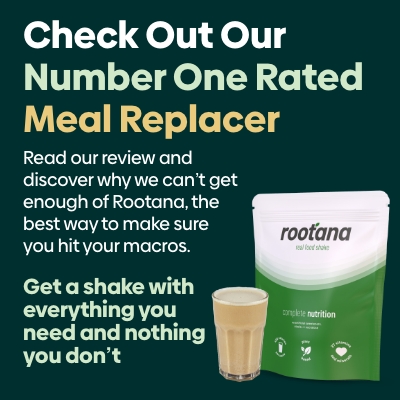The Ultimate Diet Plan for Building Muscle
Diet is key when it comes to building muscle. In this Ultimate Diet Plan, we break down the science of muscle hypertrophy and give you the tools you need to develop athletic, functional mass that’s as strong as it is aesthetic.
It’s not easy building muscle.
If it was, we’d all be walking around with 20 inch arms and shoulders that could shadow out the sun.
Creating a strong and lean physique takes time and dedication. But using diet to your advantage helps to speed the process up, hacking your physiology to accelerate results in half the time.
Food is your secret weapon – if you use it in the right way. It gives you the fuel and energy you need to tear apart your workouts and build you physique to the best of its ability.
In this article we’ve pulled together the scientific approaches of our leading nutritionists to bring you our Ultimate Diet Plan for Building Muscle.
It’s about to get real…
Know the Basics of Muscle Building
Everyone then who hears these words of mine and does them will be like a wise man who built his house on the rock.
The basics of muscle building provide the foundation for your physique. They’re essential to any muscle building plan.
You can’t build a house on sand.
It needs a strong foundation that can support its structure and weight. Similarly, you can’t create a great physique without taking care of the foundations first.
The basics of muscle building might not be sexy. But damn, they work. Body builders and athletes have been integrating these simple but effective mass building rules into their training for years.
And now it’s your turn.
Here’s what you need to know…
Progressive overload provides the stimulus for muscle building
To build muscle you need to create tension through the fibers you’re targeting. Without this stimulus, you never actually trigger the process of growth.
Progressive overload refers to constantly challenging your body through exercise programs that get tougher and tougher.
Your body only adapts to a stimulus that is habitually above what it’s used to. You ever seen those guys who perform the same workout day-in, day-out and wonder why they’re body isn’t changing?
It’s because they’re not pushing themselves out of their comfort zone.
The key to a great muscle building program is for it to be constantly challenging
If your program asks you to choose a weight for 8-12 reps for example, and you can only just squeeze out 9 reps that’s great. But as you get stronger you find that eventually you’ll be able to grind out 13, or 14 or more (well, we’d hope so anyway as it’s a sign you’re getting stronger.
That’s your cue to add more weight.
That way, you’re constantly stimulating the muscle and moving towards mass building.
Train to near-fatigue in every set. Avoid complete failure but aim to lift that weight as many times as you can. Leave just one or so reps in the tank and as soon as you hit your upper rep range, get that weight increased.
Your body will thank you for it.
You can implement progressive overload in the other ways too:
- Adding sets
- Squeezing out more reps with the same weight
- Reducing rest periods (or lengthening them and subsequently loading more weight to each exercise)
- Changing exercise order
- Adapting the tempo of each lift
Key Point: progressive overload ensures muscle building Train to fatigue in every set and as soon as you reach your upper rep range, take the load up a little… and repeat.
A calorie surplus provides fuel for growth
You can build muscle on a lower-calorie diet… but achieve an energy surplus and your physique will blow up.
Your body needs energy to train hard. To refuel and to build extra muscle cells.
When you eat food, your cells take in energy in the form of calories.
Know your BMR – basal metabolic rate
Your basal metabolic rate refers to the calories your body needs to regulate brain function and muscle mass, maintain liver and kidney mass, and support breathing and heart rate.
Your BMR doesn’t include the energy you need to move. It refers to the absolute minimum number of calories you need to maintain these functions – and is typically measured while sat (or laid) at rest.
If all you did all day was watch TV box sets you’d only need to hit your BMR calorie intake to maintain body mass.
Calculating your BMR:
Men
- BMR = 66 + (13.7 x weight in kg) + (5 x height in cm) – (6.8 x age in years)
Women
- BMR = 655 + (9.6 x weigh in kg) + (1.8 x height in cm) – (4.7 x age in years)
Whenever you move, you need more energy on top of your BMR.
Movement requires work. Work requires muscle contraction and muscle contraction requires energy.
Whether it’s because of a brutal cardio workout, a strength session, walking or fidgeting – more movement means more calories burned (and needed).
The total number of calories you burn each day is simply your BMR and your physical activity added together.
BMR + activity = TDEE
Working out your daily activity level:
- Sedentary (little or no exercise): BMR x 1.2
- Lightly active (easy exercise/sports 1-3 days/week): BMR x 1.375
- Moderately active (moderate exercise/sports 4-5 days/week): BMR x 1.55
- Very active (hard exercise/sports 6-7 days a week): BMR x 1.725
- Extremely active (very hard exercise/sports and physical job): BMR x 1.9
Increase your maintenance intake by 10-20% to promote muscle growth
Now, here’s the important bit…
If you eat more than your body needs for its TDEE, you’re left with a ‘surplus’.
This provides spare fuel for your body to build extra muscle mass.
If you give your body just that little bit of spare energy you allow it the building blocks to build new cells. If you don’t, there’s nothing spare to cultivate muscle mass – all your energy is going into preserving function of your internal organs and moving your body.
Note: More isn’t always better – go above 20% and you may start to accumulate fat. Be patient.
Key Point: taking your daily calorie intake up from maintenance by 10-20% gives your muscles valuable resources to start building some new mass.
The Importance of Macronutrients
The choice of foods you make can make or break a physique transformation.
Macronutrients are needed to promote health, energy, body function and growth.
- Protein – 4 kcal per gram
- Carbs – 4 kcal per gram
- Fats – 9 kcal per gram
Note: Alcohol provides 7 kcal per gram but has no nutrient value.
Once you’ve nailed your calorie intake and are moving ever-closer to your finished diet, it’s important to look at how you make those calories work for you.
A diet of junk food will lead to some increased mass – but to maximize muscle and minimize fat gain it’s important you get your ratios on point.
Protein is a key nutrient to support mass building
There’s only one nutrient that builds muscle cells. Yep, protein.
It should account for around 15-35% of your overall dietary intake of macronutrients in order to build as much muscle as possible.
While carbs are needed for energy and fats are important for steroid hormone production, your body can only use protein to build new muscle cells.
Although it’s involved in making white blood cells and hormones, the main role of protein for a strength athlete is growth repair and regeneration of muscle cells.
So, how much protein do you need?
According to the latest research, around 1.3-1.8 grams per kilogram of body weight [1]. That should be split over 3-4 meals to maximize the ‘drip feed’ effect on protein in the muscle.
Protein helps to offset the gradual and natural process of protein degradation. It has an anabolic effect and provides everything your muscle needs to increase in size and strength.
Protein has an energy value of 4 kcal per gram. If you weigh 100 kg and need 130 g of protein to fuel your building muscle, that’s a muscle-fueling 520 kcal.
Good sources of protein include:
- Meat, dairy and eggs
- Fish
- Soy
- Quinoa and buckwheat
- Mycoprotein (vegetarian friendly meat substitute)
Key Point: Your protein intake on this Ultimate Diet Plan for Building Muscle should be between 1.3-1.8 g per kg.
Use carbs and fats to make up the rest of your intake
Once you’ve calculated your energy and protein needs, you’ll be left with some spare calories.
These are for carbs and fats.
The exact split between these two is down to personal preference. Some athletes want more carbs and lower fats, whereas some go the other way.
Both are important though so don’t cut one out altogether.
- Carbs are stored as glycogen in muscles and help to give size and volume. They’re broken down into glucose during exercise for energy.
- Fats are used to manufacture testosterone and other steroid hormones.
Go with a fat intake no lower than 20% of total calories. 0.5-1 gram per kilogram of body weight is a starting point that most athletes start with [2].
The fat requirements of athletes are similar or somewhat higher, so consumption of adequate amounts of fat is essential for optimal health ~ The International Society for Sports Nutrition.
Good sources of fat include eggs, dairy, oils and meat.
Carb intake really depends on the frequency and intensity of your workouts. It’s recommended that strength athletes go for 4-7 g per kilogram, focusing on nutrient dense choices such as wholemeal grains, vegetables and fruit.
Without both these nutrients you’ll not optimize performance.
A ‘low fat’ diet results in low testosterone – a problem when trying to build muscle. Lower carb diets can leave you low in energy and your muscles look flat and weak.
Key Point: Setting fats at 0.5 g per kilogram and carbs at 4-7 g per kilogram helps to optimize function, health and performance.
Nutrition Tips for Muscle Building
Use these quick tips to maximize results in the fastest time possible.
Check out these tips to accelerate your lean physique.
#1. The number of meals isn’t that important
It doesn’t matter if you space out your meals into smaller portions or cram them into 2-3 larger ones.
Studies show that you can’t adapt your metabolic rate by spreading food out. Neither will you ‘go catabolic’ if you skip a meal and eat it later that day.
What is important is the total amount you eat each day – and of course, what you eat too.
The only reason to split meals into more regular portions is personal preference.
Note: It does make sense to dose your protein into smaller portions though, just to keep a constant supply of amino acids hitting the muscles. But even then, the difference between that and less frequent, larger doses isn’t massive.
#2. Go 80/20
A large portion of your diet should come from lean meat, vegetables and wholemeal grains. There’s nothing wrong with a ‘cheat food’ every now and then – it helps with compliance, mood and motivation.
Just make sure 80% of the time you’re sticking to the plan.
The other 20% you can enjoy your favorite foods… guilt free.
#3. Consider supplementation
It can be hard to get the nutrients you need from food alone.
Using supplements such as whey protein, testosterone boosters, pre workouts and creatine all help you to perform at your best, while fueling your body optimally.
#4. Space your carbs around your training
You won’t have an endless amount of carbs on this Ultimate Diet Plan for Building Muscle.
To get the best from your foods, try eating carbs before your workout in order to give you energy, and afterwards to help with the repair process.
Training low on energy will only lead to poor workouts and sub-maximal results.
#5. Stay hydrated
Muscles are mostly water.
In order to perform, stay healthy and look your best, you need to stay hydrated. Building muscle growth and recovery are both reliant on fluids.
A rough guideline is to take on 2 liters of water each day – more if you’re taking part in intense exercise.
The Meal Plan
This example 1-day diet is based on an average weight man who’s training 3-4 days per week. It has the right protein, fats and carbs built into the meal plan, in order to optimize results.
Breakfast
- 3 large egg omelette with cheese
- 1 bowl of oatmeal made with semi-skimmed milk
- 1whey protein shake
Snack
- 3 tbsp peanut butter, 6 carrot batons or celery sticks
Lunch
- 1 large baked potato
- 1 tub of cottage cheese
- Side salad (greens, peppers, red onion and tomato
Snack
- 1 handful of beef jerky
Evening meal
- 1 beef steak cooked with garlic and butter
- 1/2 cup brown rice
- 1 cup of broccoli
FAQs
-
Is there a correct rep range for building muscle?
The short answer is no.
Studies have shown that you can build muscle with both heavy weights (above 80% 1RM) and lighter weights (30% 1RM).
The key thing is that you aim for as much volume as you can recover from. More volume = more muscle.
-
What are the best exercises for building muscle?
Any exercise that fatigues a muscle will lead to growth.
However, big exercises such as pushes, pulls, deadlifts and squats should be your focus as they activate more total muscle mass compared to isolation exercises.
-
Are there any essential muscle building foods?
Not really.
The key to your plan is to go include high-protein foods as your base, so eggs, meat and dairy are important.
If you’re vegan you can get all the protein you need from foods like quinoa and buckwheat.
But there are no foods you must have.
-
How many exercises in total?
It’s recommended for building muscle to complete a total body workout of 8-10 exercises and stimulate each muscle twice per week.
A total number of 25 sets across every exercise for each workout is a guideline, but you can extend that if you’re more experienced.
-
Should you do cardio?
It’s true that unless you’re doing hours and hours of it, cardio won’t ‘steal your gains’.
But it’s not that relevant to building muscle. And the idea is to conserve your calorie deficit, so your body can generate some new muscle cells.
Some light cardio is fine but otherwise you can ditch it on this program.
-
What if you don’t like some foods?
The plan we’ve provided is a sample one only – it’s not meant to be followed to the letter.
Not only should you be adapting your meals to your own specific dietary calculations, it also doesn’t consider any allergies or dislikes you might have.
Swap out foods for the ones you really like… but just make sure you’re getting your macros right.
-
What’s the best time to train?
It really makes no difference at all.
Find a time that suits your energy levels and other commitments and go from there. The last thing you need is to start being too prescriptive and worrying about specific times of day for the gym.
Just roll with the punches.
Make sure you leave at least 12 hours between workouts if you can though, just for recovery.
Final Word
That’s it. You’ve now got all the dietary tools you need to carve out a solid steel aesthetic.
Combine this diet plan with one of our detailed training guides and you’ll be well on your way to a great physique.
- Gym workout plan for men
- Weekly workout plan to build muscle
- The best strength training program for over 50



